#lampe design italien
Text
Jeu concours Oluce : remportez l'emblématique lampe à poser Atollo en laiton brossé !
L’histoire de la célèbre maison italienne Oluce…
Fondée en 1945 par Giuseppe Ostuni, Oluce fait partie des plus anciennes et prestigieuses maisons d’édition italiennes.
L’histoire d’Oluce est étroitement liée à l’évolution du design italien au cours des décennies. Au fil des années, la marque a collaboré avec de nombreux designers renommés sur la scène internationale tels que Vittoriano Vigano,…
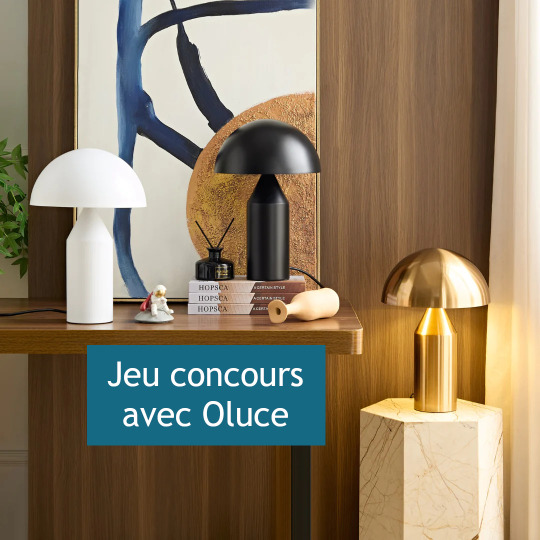
View On WordPress
#Atollo Oluce#jeu concours nedgis#Jeu concours Oluce#Lampe à poser Atollo#lampe champignon#lampe design italien#oluce
0 notes
Text
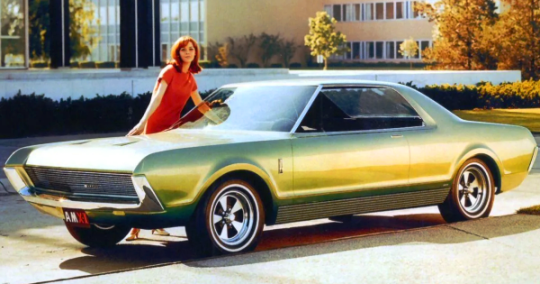
Outside the AMC Box: 1966 American Motors AMX II Concept
Posted on March 19, 2024 by MCG
To create the AMX II, AMC design chief Richard Teague reached outside his own styling studios and brought in independent designer and builder Vince Gardner.
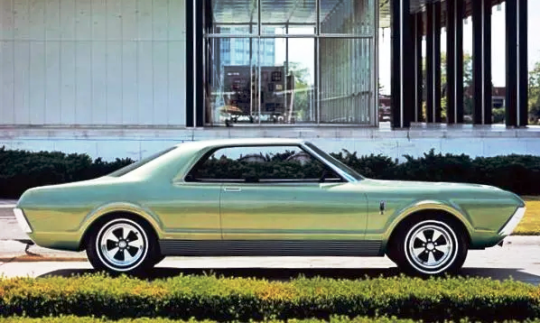
In his long tenure as vice president of design at American Motors from 1964 to 1983, Richard A. Teague earned a reputation for working outside the box. This constant drive to be different could be seen, for example, in the four Project IV concept vehicles his design staff prepared for a 1966 promotional tour, with displays in six major American cities. For one of the Project IV cars, the AMX II, Teague reached outside the box a little further and brought in an independent designer, Vincent E. Gardner.

Among car designers, Vince Gardner had a remarkable skill set. In addition to being a talented stylist, he was also a highly capable clay modeler and fabricator. As a kid fresh out of high school, he prepared the clay model for the 1936 Cord 810, working alongside designer Gordon A. Buehrig. His own design credits include the 1947 Gardner Special, the 1953 Vega sports car, and the 1964 Mustang III, while the 1962 Thunderbird Italien and 1968 Dodge Charger III are among the concept vehicles he constructed for the automakers.
While the AMX II was Gardner’s creation, it didn’t look at all out of place among the other three Project IV concept vehicles, integrating nicely. (See our feature on the Project IV Cavalier here.) According to the American Motors press materials, the AMX II was intended to expand on the theme of the AMX sports car concept, which made its public debut in the Project IV program
Eight inches longer than the AMX, the AMX II included room for four passengers and a generous trunk. (AMX stood for American Motors eXperimental.) Though it almost doesn’t look it, the wheelbase was a full 110 inches, with a shape that could remind you of the 1967 Mercury Cougar, though it’s slimmer, less chunky.

Features included hidden headlamps and windshield wipers, while an automated circuit locked the doors when the AMX II was moving. At the rear was was a safety tail lamp arrangement with green, yellow, and red segments for driving, slowing, and braking. However, it seems many of these features probably existed only on paper.
Like the other Project IV cars, the AMX was not a running vehicle, but merely a fiberglass studio glider with no drivetrain or running gear. There was no real interior, either, only a black sillhouette panel inside, just under the beltline, to fill the cabin volume. Like so many pushmobile show cars, the AMX II served no real function once its display career was concluded, so it was more than likely scrapped soon after.

48 notes
·
View notes
Link
3 notes
·
View notes
Text
See the Incredible Interiors of Mid-Century Design Polymath Gio Ponti
See the Incredible Interiors of Mid-Century Design Polymath Gio Ponti
Giovanni Ponti (1891–1979), better known by his nickname Gio, was arguably the most important figure in 20th-century Italian architecture and design. He is best known for his imposing buildings (his Pirelli Tower looms over Milan); his sometimes practical, sometimes impractical furniture (including, in the former category, the lightweight Superleggera chair, produced by Cassina since 1957; […]
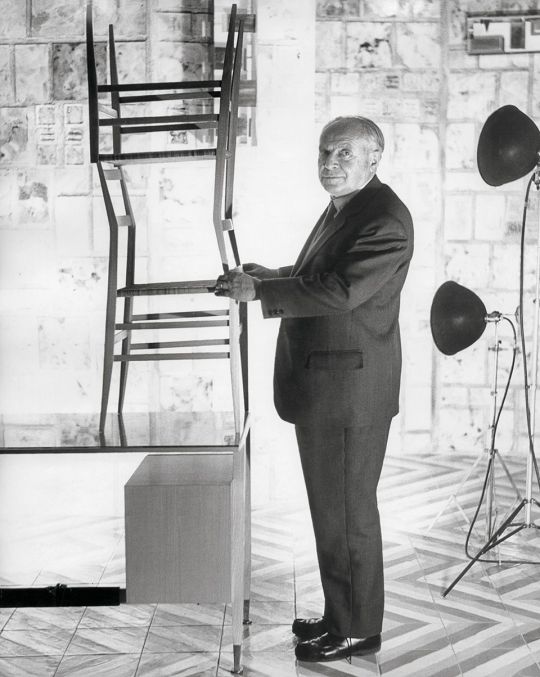
Explore the Genius of Italian Architect Gio Ponti
The pioneer of modern design is the focus of an upcoming retrospective in Paris

At Home With Roberto Baciocchi (Published 2016)

Gio Ponti exhibition
Modernity specialises in the collection and sale of rare and high-grade furniture, ceramics, glass, lighting and jewellery by the most renowned Scandinavian designers of the 20th Century.

Heritage Collection
Molteni&C is re-examining its own history with an eye to the future. The 80!Molteni exhibition, the creation of the company’s historical archive and its
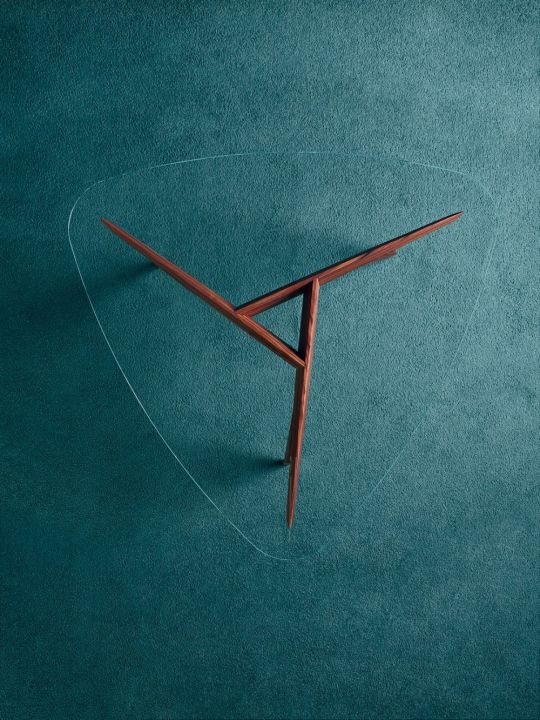
Gio Ponti, Rare "811" Lounge Chair, Fabric, Walnut, Rubber, Cassina, c. 1956
About A rare and iconic lounge chair designed by Gio Ponti. Produced by Cassina, Meda, Italy, c. 1956. This chair is sold with a certificate of authenticity from the Gio Ponti Archives. Other Italian designers of the period include Ico Parisi, Franco Albini, Carlo Mollino, Paolo Buffa, and Osvaldo Borsani.

118: GIO PONTI, Rare and early chair from Conti Contini Bonaccossi, Florence | Wright20.com
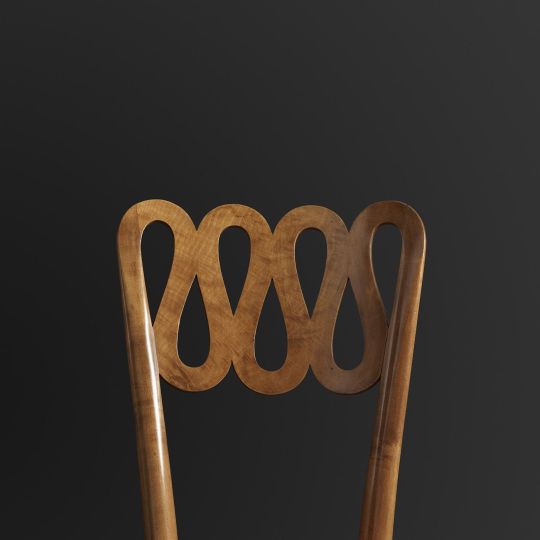
Gio Ponti : les 7 enseignements du génie italien pour faire rayonner votre intérieur - Elle Décoration
Expo jubilatoire de l'automne, la rétrospective consacrée par le musée des Arts Décoratifs* à l'oeuvre immense du génie italien Gio Ponti, promet de faire vibrer Paris. Suivez ses sept enseignements capitaux pour faire rayonner votre home.*Du 19 octobre au 10 février 2019, "Tutto Ponti. Gio Ponti, archi-designer". Plus de renseignements ici.

Giò Ponti en 10 œuvres phare
Retour sur les 10 projets marquants qui ont émaillé sa carrière prolifique
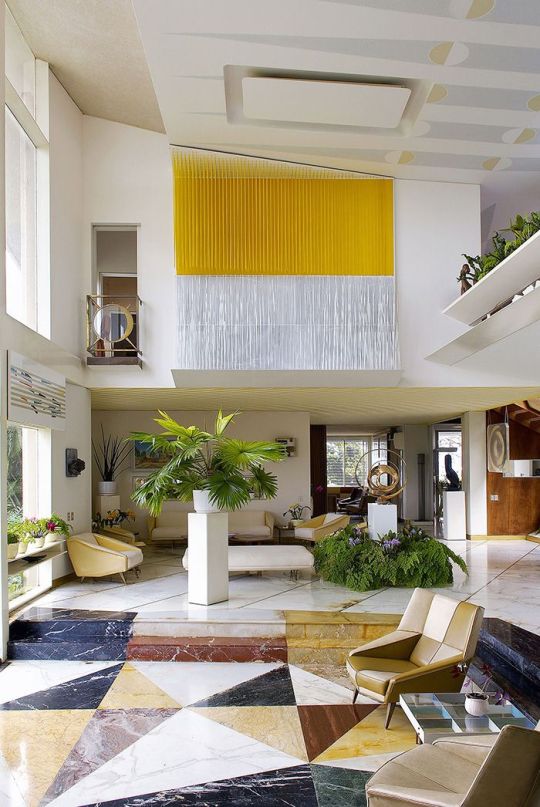
Gio Ponti’s University of Padua Project, in Pictures (Published 2018)

218: GIO PONTI, display cabinet, model 2140 | Wright20.com

First Skyscraper in your country!

Emma Finch on Her Favorite Lamps, Gio Ponti, and the Future of Brilliant British Company Hector Finch
Emma and Hector Finch, owners of the British heritage lighting brand Hector Finch, will be at James showroom in Dallas (March 1 to 3) to “talk all things

Creators A new book brings attention to the Italian master’s talent for creating unforgettable rooms.by Fred A. Bernstein The subject of a comprehensive new book by TASCHEN, design legend Gio Ponti poses here for a 1959 portrait with his Superleggera chairs (photo by Dan Wynn, courtesy of Gio Ponti Archives/Historical Archive of Ponti’s Heirs). Top: At Villa Planchart, built and furnished by Ponti in the 1950s, two antelope heads are mounted in rotating displays that allow them to be hidden from view (photo by Jason Schmidt). May 2, 2021Giovanni Ponti (1891–1979), better known by his nickname Gio, was arguably the most important figure in 20th-century Italian architecture and design. He is best known for his imposing buildings (his Pirelli Tower looms over Milan); his sometimes practical, sometimes impractical furniture (including, in the former category, the lightweight Superleggera chair, produced by Cassina since 1957; and, in the latter, the half-seat-less Gabriela lounge chair of 1971, “for crossing legs comfortably,” Ponti explained); and his achievements as an editor/entrepreneur (he founded Domus in 1928 and ran it until his death with just one break, to launch another publication). He was also a successful product designer, curator, painter, graphic designer, teacher, author and promoter of Italian industry through his collaborations over 60 years with seemingly every important manufacturer, artist and designer in that country. A new book from TASCHEN, more than a decade in the making, lays out his achievements in each of those fields. Gio Ponti presents 136 projects, with text by Stefano Casciani, the Italian writer and designer who conceived the book, as well as Ponti’s late daughter Lisa Licitra Ponti and grandson Salvatore Licitra. Brian Kish, a New York–based architecture and design historian, wrote nearly 1,000 captions for the volume. “Ponti launched Italy into the twentieth century, and this book makes him relevant for the twenty-first,” says Kish, who believes Ponti’s expropriation of historical motifs has a contemporary feel. On 1stDibs, TASCHEN is offering the special Art Edition of Gio Ponti with a reproduction of the designer’s Arlecchino coffee table. Each book in the numbered series of 1,000 comes with a set of four numbered prints of Ponti drawings, as well as the coffee table, reissued in the rarely seen square format first conceived in 1954 for Villa Planchart. The book is full of revelations. But for those who know Ponti for his architecture and his furniture, the real surprise is the ways they came together in rooms that display his seemingly endless supply of creativity. There are many lessons to be drawn from the book, including this one: Ponti was a superb interior designer. Here are just a few of the spaces that prove it. Palazzo del Bo, 1936–41 Left: The central vestibule of the palazzo, which serves as the rectory of the University of Padua, is covered with murals created by Ponti with the help of his daughter Lisa Licitra Ponti and painter Fulvio Pendini. The sculpture, titled Palinuro, is by Arturo Martini. Right: The furnishings in the rector’s office were designed by Ponti and produced by Luigi Scremin. Photos by Giovanna SilvaFrom 1936 to 1941 Ponti redid the interiors of the 15th-century palazzo housing the rectorate of the University of Padua. The main staircase, which he called the Scala del Sapere (stair of knowledge), was fitted with multicolored marble risers, a motif he would repeat in other projects. A pair of Ponti-designed sconces made by Fontana Arte —where as a young man he had been named artistic director — illuminate the frescoed wall wrapping around the stairway. Ponti executed the fresco with the assistance of his daughter Lisa and the painter Fulvio Pendini, treating the wall as a void against which the painted figures seem to float. The rector’s office was outfitted with custom pieces designed by Ponti and made by Luigi Scremin. The bronze door handles are by the sculptor Marcello Mascherini. On the far wall is an enameled painting on copper of one of the university’s founders, rendered by Ponti. Who else could have created a room so serious and so original at the same time? Andrea Doria, 1949–53 This image from a promotional brochure shows the ship’s Zodiac Suite, designed by Ponti with blue-and-white prints by fellow Italian great Piero Fornasetti. Photo courtesy of Paolo Piccione Collection One of Ponti’s most successful collaborations was with the artist Piero Fornasetti, and one of their greatest achievements was the ocean liner Andrea Doria, a symbol of Italy’s postwar renaissance. (Launched in 1953, it was the largest, fastest and supposedly safest of Italy’s new ships.) In an instance of what Kish calls “exuberance tethered to surrealism,” Ponti engulfed the first-class Zodiac suite in Fornasetti’s lithographic transfer prints in such profusion that they create a deliberate disorientation. The white-on-blue and blue-on-white fabrics are an example of a positive-negative tack that Ponti often took to keep things interesting. He “furnished the walls,” Kish says, with various built-ins, and whenever possible, he hid light sources, allowing Fornasetti’s work to dominate. The Madonna and Child over the bed was most likely hung by the owners of the ship when it was blessed before its maiden voyage. The religious icons didn’t save Andrea Doria. It sank in 1956 after colliding with a Swedish ship off the coast of Nantucket. Conte Grande, 1949–53 The first-class reading room of the Conte Grande included Ponti furniture produced by Cassina. Strips of anodized aluminum embellished the ceiling. Photo courtesy of Gio Ponti Archives/Historical Archive of Ponti’s Heirs In the late 1940s, Ponti refurbished several ocean liners that had been used, and badly damaged, in the war. He covered the walls of the Conte Grande’s first-class reading room, a library-like space, in mottled parchment that evokes burled wood. The ceiling is plaster, but with inset strips of anodized aluminum, which Ponti used throughout the ship, elevating an industrial material to a thing of beauty. Concealed lights turn the low ceiling into an overhead display. Intarsia (wood mosaic) panels depict stylized buildings. Flowers and butterflies adorn an enamel-on-glass panel by Nino Zoncada. With rooms like this, Ponti proved that there was no technique and no material he couldn’t find a place for in interior design. Ceccato Apartment, 1950 Ponti selected burled walnut for both the desk and the walls of the main reception room of the Ceccato home in Milan. The recessed shelves hold ceramics by Fausto Melotti. Photo courtesy of Gio Ponti Archives/Historical Archive of Ponti’s Heirs The sheets of Ferrara root wood (known to Americans as burled walnut) that Ponti chose for the reception area of this 1950 Milan apartment have such extravagant, Rorschach-test–like veining as to be almost surreal. But using the same wood on horizontal and vertical surfaces is even more disorienting. It doesn’t help that the curved living room is on a raised platform, or that the marble floor is set on the diagonal. (Diagonally patterned floors, meant to make rooms more dynamic, were a Ponti signature.) Two recessed shelves, illuminated from behind, display ceramics by Fausto Melotti. The Ceccatos were chocolatiers whose Milan retail store was also designed by Ponti, in the same year, 1950. Vembi-Burroughs Offices, 1950 The offices of adding-machine manufacturer Vembi-Burroughs, featured on the cover of a 1952 issue of Domus, had rubber flooring developed by Ponti in conjunction with Pirelli. The large Ponti-designed display table was also used for training staff on the machines. Photoy by Ancillotti, courtesy of Editoriale Domus S.p.A In May 1952, Domus featured on its cover the reception area of the Vembi-Burroughs company, a Genoa-based maker of calculators and adding machines. In redoing the company’s offices, Ponti used his own rubber flooring, called Fantastico P, which he developed with the tire company Pirelli. The system he invented allowed colors to be spread over large expanses without repeating patterns, perhaps emulating the striations of marble. (Fittingly, he later used the material in his Pirelli Tower.) Ponti also designed elegant but functional office furniture and enlisted his frequent collaborator Piero Fornasetti to produce upholstery fabrics that depicted the company’s products. Even serious workspaces can be joyful, or, as Ponti himself put it, “a degree of amusement shouldn’t be excluded.” Villa Planchart, 1953–57 In the reception area of Villa Planchart, in Caracas, Ponti’s Mariposa chairs flank a square version of his Arlecchino coffee table. The master bedroom, on the second floor, includes a small balcony overlooking the space. A site-specific installation by Jesús Rafael Soto, added after Ponti finished his work on the house, occupies the wall next to the balcony. Photo by Antoine Baralhe One of Ponti’s most successful projects outside Italy is the Villa Planchart, in Caracas, Venezuela, completed in 1957. (Kish notes that Ponti ultimately built in more countries than the seminal modernist Le Corbusier.) He designed the villa for Anala and Armando Planchart, art collectors who had made a fortune representing General Motors in South America and who chose him because, Anala wrote, ”we liked everything that appeared in Domus.” Its rooms were to be filled with tropical plants and other exotica, including Ponti’s own furniture. His leather-upholstered Mariposa armchairs, from Cassina, made one of their first appearances in the front of the main reception area. In the back of that room, geometric sofas and chairs from Ponti’s Diamond line are harlequined in yellow and white. The color-block ceiling is a subtle echo of the marble floor. Upstairs bedrooms have tiny balconies overlooking the reception hall; the railing around one depicts a sliver of a moon, in bronze. Ponti would have thought through the view from that balcony. Says Kish, “He drew little figures on his plans with dotted lines to show the clients what they were in store for.” The tables in the main dining room, custom designed by Ponti, were made by Giordano Chiesa. Ponti’s tall brass sconces were made by Arredoluce. Photo by Antoine Baralhe Ponti varied ceiling heights to symbolize the relative importance of various rooms. The double-height dining room contains half a dozen tables of various sizes; their painted tops echo the fragmented marble floor slabs and the painted ceiling. Ponti designed nearly everything in the room, including the surreally long brass sconces. “They would have been glowing and sending light up to the ceiling,” Kish says. This drawing shows plans for the bar, which is designed to masquerade as a colorful mural, with panels that conceal two foldout tables and rotating shelves for liquor and glassware. Photo courtesy of Centro Studi e Archivio della Comunicazione, Universitа di Parma, and Sezione Progetto, Fondo Gio Ponti Nothing was left to chance; an ink drawing with colored gouache lays out what looks like a mural of overlapping triangles and trapezoids. In fact, it is Ponti’s rendering of the bar area, where two panels conceal foldout tables and a third a carousel of glass shelves for barware. Ponti disliked the trophies from the African hunting expeditions of his patron Armando Planchart. Asked to display two antelopes’ heads in the study (pictured at top), he mounted them within a wall of walnut cabinetry, on panels that could be turned 180 degrees, hiding them completely. Below the antelopes are cabinets painted in a fragmented diamond pattern. Ponti’s oddly industrial Round chair (model 852), made by Cassina, is used here for the first time in a domestic setting. The accompanying Mariposa armchairs are also from Cassina. Villa Arreaza, 1954–56 Ponti’s blue-and-white color scheme touches every corner of the villa’s reception area. He reupholstered the owners’ existing furniture to match it and added a pair of his Round chairs, seen in the foreground, as well as two tables of his own design. Photo courtesy of Gio Ponti Archives/Historical Archive of Ponti’s HeirsWhile working on the Villa Planchart, Ponti designed a smaller house for the Arreaza family, known as La Diamantina for its predominant motif. The main reception room was a festival of blue and white, from tiled floor to painted ceiling. The drapery fabric is Ponti’s Diamanti for JSA. Doors that open to the dining room are disguised as a diamond-patterned mural (broken up by a dark rectangle). The owners’ older furniture was refreshed with new Ponti-designed upholstery fabrics. Hotel Parco dei Principi, Rome and Sorrento, 1960–64 The lobby of the Hotel Parco dei Principi in Rome is furnished with sofas, chairs and coffee tables produced by Cassina. Ponti collaborated with Emanuele Ponzio on the wall sconces and pendant lights, made by Candle. Photo courtesy of Gio Ponti Archives/Historical Archive of Ponti’s HeirsThe banquet room walls are lined with colored ceramic pebbles from Ceramica Joo. The curtains are from JSA, and the tables and chairs were produced by Cassina. Photo courtesy of Gio Ponti Archives/Historical Archive of Ponti’s Heirs One of Ponti’s favorite shapes was the elongated hexagon, which appears in everything from small tabletop items to the footprint of his Pirelli building. Here, it’s the shape of the windows in the lobby of the 1964 Rome hotel, as well as that of the sconces, designed by Ponti with Emanuele Ponzio. Ponti created the interiors using several trademark techniques, including the patterning of all-white surfaces (see the subtly striped ceiling in the far room). Some walls are covered in grasscloth and some in Venetian stucco; others are studded with ceramic pebbles arranged in patterns derived from antiquity. In another example of his inventive use of materials, baseboards throughout the hotel’s ground floor are brass. The Rome lobby is furnished with Ponti-designed sofas and chairs from Cassina (model 899). The same ceramic pebbles used in Rome dot the walls of the entrance hall at the Hotel Parco dei Principi in Sorrento. The pillar at left, however, is covered with ceramic panels by Fausto Melotti and adorned with a sconce by Arredoluce. The floor tiles are by Ceramica D’Agostino. Photo by Allegra Martin, courtesy of Collezione Fotografia MAXXI ArchitetturaThe blue-and-white ceramic tile work continues into the bar area. But the bar stools are not, in fact, a Ponti design. Though made by Cassina, they were conceived by Gianfranco Frattini. Photo by Allegra Martin, courtesy of Collezione Fotografia MAXXI Architettura In the sister hotel in Sorrento, Ponti used ceramic pebbles to particularly dramatic effect, applying — as he often did — a graphic design approach to interior design. But here the floors are tile, and Ponti used not just his own furniture but pieces by Gianfranco Frattini (the bar stools), Ico & Luisa Parisi and Carlo de Carli, all made by Cassina. Buy This Book Gio Ponti, offered by TASCHEN, is also sold as an Art Edition, accompanied by four numbered Ponti prints, as well as a reissue of the designer’s Arlecchino coffee table, available through 1stDibs and TASCHEN.
0 notes
Photo

J'adore ce salon et l'ambiance de cet appartement Artfully ... C'est la découverte de ce matin dernier vendredi de l'année la galerie du blogueur Space Age Sublime Camaleonda Sofa de Mario Bellini Génie du design industriel italien, Mario Bellini a entre autres produit des meubles pour B&B Italia, Cassina, Vitra, Kartell, Driade, Poltrona Frau et des lampes pour Artemide et Flos Born in 1935 in Milan, studied architecture at the Polytechnic 1959, as a student of personalities like Ernesto Nathan Rogers, Gio Ponti and Piero Portaluppi. He was design director for Rinascente and 1963 he opened his design studio in Milan; at the same time he was chief consultant for the Italian company Olivetti. It was for the latter that he signed some of the most innovative projects such as the Program 101, considered one of the first prototypes of the personal computer. He did not neglect interior design either, presenting an entire mobile environment at the 1972 exhibition held in New York "Italian: The New Domestic Landscape". He was president of the Industrial Design Association since 1969 Al 1971 and director of Domus since 1986 Al 1991; he was also the owner of many chairs of the major international design schools. #Repost @spaceage_mood 💛- For sale - Camaleonda sofà by Mario Bellini, 1970s💛 #midcenturymodern #camaleondasofa #camaleonda #mariobellini #architect #1970s https://www.instagram.com/p/CmyZOtct6-x/?igshid=NGJjMDIxMWI=
1 note
·
View note
Photo

Bei wundervollem Herbstwetter besuchte ich heute in Frankfurt die Light & Building und war wieder auf Mission für Design, Idee und Lösungen. Obwohl die Messe nicht so bestückt war wie vor 4 Jahren vor Corona, so habe ich doch wundervolle Menschen und Kreativität aus Belgien, Italien, Deutschland, Frankreich, Schweden oder der Tschechischen Republik kennengelernt. Der Tag hat sich also gelohnt und ich fahre zufrieden heimwärts. Hier ein absolutes Highlight für mich: die italienische Firma SLAMP: mit einer einzigartigen Designsprache und einer durchdachten Philosophie überzeugten die Kreationen und die Menschen dieses Labels! Vielen Dank für die Gastfreundschaft. #fair #messe #lightandbuilding #light #lightingcollection #lightdesign #lights #lightshow #lightinspired #worldoflights #illumination #lichtdesign #designer #interiordesign #roomdesign #led #frankfurt #frankfurtmesse #interiordesign #interieur #chandeliers #lamps #lampdesign #sunnyday #skyline #city (hier: Messe Frankfurt) https://www.instagram.com/p/CjYM1iBNKsF/?igshid=NGJjMDIxMWI=
#fair#messe#lightandbuilding#light#lightingcollection#lightdesign#lights#lightshow#lightinspired#worldoflights#illumination#lichtdesign#designer#interiordesign#roomdesign#led#frankfurt#frankfurtmesse#interieur#chandeliers#lamps#lampdesign#sunnyday#skyline#city
1 note
·
View note
Text
Table Lamp by Martinelli Luce Italy - Kopie
Table Lamp by Martinelli Luce Italy – Kopie
Tischleuchte von Elio Martinelli 70er
Rar gewordene Tischleuchte Flex 600 von Elio Martinelli für Martinelli Luce Italy aus den späten 70er Jahren in hervoragendem Zustand. In der Höhe verstellbar.
Kunststoff / Metall
B ca 60 cm, H ca 50 ( Wie auf dem Foto )
Preis 450 €

View On WordPress
#cologne#design#designklassiker#entwurf#italien#italienisches design#köln#martinelli#martinelli luce#rheinstore#rheinstoregallery#schöner wohnen#table lamp#tischleuchte#vintage
0 notes
Photo

Seit 1989 kreiert das italienische Traditionsunternehmen Catellani & Smith Lampen jeder Art in Handarbeit. Designer Enzo Catellani lässt sich von verschiedensten Dingen inspirieren, so zum Beispiel dem Mond, dem er sich hingebungsvoll und detailgetreu in seiner Kollektionsreihe Stchu-Moon widmet. Außerdem schreckt das Unternehmen auch vor kleinen politischen Anspielungen nicht zurück, so gestalteten sie zum Beispiel eine Lampe, die sie "Kuweit 91" tauften und damit auf den zweiten Golfkrieg 1991 anspielten. Auch religiöse Symbole finden ihren Weg in die Kollektionen - verkörpert durch den eindrucksvollen Kerzenständer "Kyrie Eleyson". Trotz aller Anspielungen vereint das Design von Catellani & Smith Eleganz mit Stil und ist trotz ergreifender Schlichtheit von herausragendem Design.
Ein Klassiker der Italiener und vom Design her typisch ist der "Fil de Fer", eine Lichtkugel aus vielen Aluminiumfäden, die von innen heraus mehrere Halogenlampen zum Strahlen bringt. Das Licht schafft eine fast verzauberte Atmosphäre und erfreut jeden Betrachter. Dennoch kommt auch die Effektivität der Leuchten nicht zu kurz. Durch die Entwicklung des Eco-Logic-Lights ist es Catellani & Smith gelungen Umweltfreundlichkeit und Nachhaltigkeit mit einer einzigartigen Gestaltungstechnik zu verbinden und so wunderschöne, effektive Lampen zu erschaffen. Im Jahr 2017 wurde die Fil de Fer von Catellani & Smith von einem Gericht in Turin als ein urheberrechtlich schützenswertes geistiges Werk anerkannt. Überraschend am Anfang, konsolidiert heute. Dies ist die Synthese des Erfolgs von Catellani & Smith Lampen. Stets mit Bescheidenheit gelebt, als Verpflichtung gegenüber den Kunden. Die Schöpfungen von Catellani & Smith gefallen, weltweit.
8 notes
·
View notes
Photo

La lampe Agraffé -40% en boutique et aussi sur notre site 🖤 Bonne nuit 😘 #repost @eno_studio Dessinée par Giulia Agnoletto pour ENOstudio la lampe Agraffé rappelle les origines du design italien et plus particulièrement celui de Milan. #lamp #Agraffé #ENOstudio #discover #HomeDecor #Design #Interior #decoration #light #lifestyle #amiens #wanderlust (à France) https://www.instagram.com/p/Bzq9DnCIjAH/?igshid=5bore4f6d9ju
#repost#lamp#agraffé#enostudio#discover#homedecor#design#interior#decoration#light#lifestyle#amiens#wanderlust
2 notes
·
View notes
Photo

De Bella vloerlamp is verkrijgbaar in drie kleuren, zwart, wit en rood. Ze heeft een textielsnoer van 2,3 m in zwart, wit of rood en een dimmer op het snoer. De hoogte is 135 cm en de diameter is 20 cm. E14 fitting. Ontwerper: Met wortels in Italië, is Antonio Sena een industrieel ontwerper gevestigd in Kopenhagen, Denemarken. Zijn ontwerpen worden gekenmerkt door eenvoud en functionaliteit. Antonio Sena heeft de Bella en Bloom lampen ontworpen voor Herstal. Le lampe de sol Bella est disponible en trois couleurs, noir, blanc et rouge. Il dispose d'un cordon textile de 2,3 m en noir, blanc ou rouge et d'un variateur d'intensité sur le cordon. La hauteur est de 135 cm et le diamètre est de 20 cm. Douille E14. Concepteur : Avec des racines en Italie, Antonio Sena est un designer industriel basé à Copenhague, au Danemark. Ses créations se caractérisent par leur simplicité et leur fonctionnalité. Antonio Sena a conçu les lampes Bella et Bloom pour Herstal. The Bella floor lamp is available in three colors, black, white and red. It has a 2.3m textile cord in black, white or red and dimmer on the cord. Height is 135 cm and the diameter is 20 cm. E14 socket. Designer: With roots in Italy, Antonio Sena is an industrial designer based in Copenhagen, Denmark. His designs are characterised by simplicity and functionality. Antonio Sena has designed the Bella and Bloom lamps for Herstal. Die Bella Stehleuchte ist in drei Farben erhältlich: schwarz, weiß und rot. Sie hat ein 2,3 m langes Textilkabel in schwarz, weiß oder rot und einen Dimmer am Kabel. Die Höhe ist 135 cm und der Durchmesser beträgt 20 cm. E14-Fassung. Designer: Der Industriedesigner Antonio Sena hat seine Wurzeln in Italien und lebt in Kopenhagen, Dänemark. Seine Entwürfe zeichnen sich durch Schlichtheit und Funktionalität aus. Antonio Sena hat die Leuchten Bella und Bloom für Herstal (bij Antwerp, Belgium) https://www.instagram.com/p/CZhZ_vGDpix/?utm_medium=tumblr
0 notes
Text
Lumina : le design éclairant à l’italienne
#Collection Elle par Lumina#collection Flo#Collection Flo par Lumina#Daphine#daphinette#Elle Lumina#Icône du design#L&039;excellence du design italien#lampe Daphine#lampe lumina#Lumina#luminaires éco-responsables#luminaires matériaux recyclables#marque italienne de design#produits design durables#Tommaso Cimini
0 notes
Text
Italian design and Fassi red for the new helmet
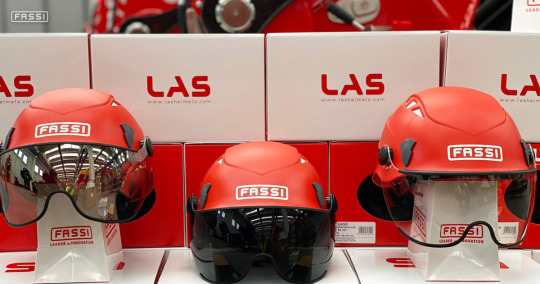

FASSI GRU teams up with the company LAS Helmets to bring the FASSI SAFETY HELMET to every dealership in the Fassi worldwide sales network
Albino (Italy) - Designed and developed entirely in Italy with the collaboration of the company LAS Helmets, based just a few kilometres away from Fassi head office, this project derived from Fassi's sensitivity to the issue of safety. The needs of operators are always to the fore during the development phases of Fassi projects, which have aimed with this product to reconfirm the company’s attention to every aspect: Quality, Safety and Design.
With a shell of ABS and ergonomic padding, this helmet offers an excellent fit and better fastening to the head, thanks to the innovative Easy turn 3D system and a soft strap hooked in four points and crossed at the back. Its design makes the helmet light and ergonomic and also improves its performance thanks to a carefully designed ventilation system. Its practicality is also guaranteed by the quick coupling/uncoupling system in compliance with the EN397 standard. The package is completed by provision for a headlamp, the attachments for anti-noise earphones and a range of three types of lenses (Clear, Tinted, Mirror) that can also be purchased with the helmet. It can be found directly through the Fassi worldwide sales network at: https://www.fassi.com/fassi-contact/sales-and-service/hydraulic-crane-sale.html

Ora, presso ogni concessionario della rete vendita mondiale Fassi è possibile acquistare il CASCO DI SICUREZZA FASSI.
Albino (Italia) - Studiato e sviluppato interamente in Italia con la collaborazione della società LAS Helmets, con sede a pochi chilometri di distanza da Fassi, questo progetto parte proprio dalla sensibilità di Fassi al tema della sicurezza. Le esigenze degli operatori sono sempre presenti nelle fasi di sviluppo dei progetti Fassi che, in questo prodotto, ha volto riconfermare la sua attenzione ad ogni aspetto: Qualità, Sicurezza e Design.
Con la calotta in ABS ed un’imbottitura ergonomica, questo casco offre, grazie all’innovativo sistema “Easy turn 3D” ed un cinturino morbido agganciato in quattro punti ed incrociato posteriormente, un’ottima calzata ed un miglior fissaggio alla testa. Un design che rende il casco leggero ed ergonomico e ne migliora anche le prestazioni grazie ad un curatissimo sistema di areazione. La praticità è inoltre garantita dal sistema di aggancio/sgancio rapidi in conformità con la norma EN397. Ne completano l’offerta le predisposizioni per lampada frontale, gli attacchi per cuffie antirumore ed una gamma di ben tre modelli (Trasparente, Fumee, Specchio) di lenti anch’esse acquistabili con il casco.
Lo si può trovare presso la rete vendita Fassi mondiale direttamente su: https://www.fassi.com/it/contatti-fassi/vendita-e-assistenza/vendita-gru-idrauliche.html

FASSI GRU s'associe à la société LAS Helmets pour apporter le FASSI SAFETY HELMET à tous les concessionnaires du réseau de vente mondial Fassi
Albino (Italie) - Entièrement conçu et développé en Italie avec la collaboration de l’entreprise LAS Helmets, basée à quelques kilomètres seulement du siège social de Fassi, ce projet est le fruit de la sensibilité de Fassi vis à vis de la sécurité. Les besoins des opérateurs sont toujours au premier plan tout au long des phases de développement des projets Fassi, qui, avec ce produit, ont visé à réaffirmer l’attention que l’entreprise consacre à tous les aspects : Qualité, Sécurité et Design.
Doté d’une calotte en ABS et d’un rembourrage ergonomique, ce casque fournit un excellent port et une meilleure fixation sur la tête, grâce au système Easy turn 3D innovant et à la sangle souple accrochée sur quatre points et croisée à l’arrière. Son design rend le casque léger et ergonomique et améliore ses performances, grâce à un système de ventilation soigneusement conçu. Sa commodité est également garantie par le système d’accrochage/décrochage rapide conforme à la norme EN397. L’aménagement pour la lampe frontale, les fixations pour le casque antibruit et une gamme de trois types de visières (Transparente, Fumée, Miroir), pouvant également être commandées avec le casque, complètent la proposition.
Vous pourrez directement le commander auprès du réseau de vente mondial de Fassi, à l’adresse : https://www.fassi.com/fr/fassi-contact/vente-et-service/vente-hydraulique-grues.html

Der FASSI-SCHUTZHELM ist ab sofort bei allen Händlern des weltweiten Vertriebsnetzes von Fassi erhältlich
Albino (Italien) - Dieses Projekt entstand in Zusammenarbeit mit der Firma LAS Helmets, die nur wenige Kilometer von der Fassi-Konzernzentrale entfernt ansässig ist. Dieser Schutzhelm wurde komplett in Italien entworfen und entwickelt und spiegelt die Sensibilität von Fassi für das Thema Sicherheit wider. Die Bedürfnisse der Anwender stehen bei den Entwicklungsphasen der Fassi-Projekte immer im Vordergrund, die mit diesem Produkt die Sorgfalt des Unternehmens für folgende Aspekte erneut bestätigen wollten: Qualität, Sicherheit und Design.
Mit einer Schale aus ABS und einer ergonomischen Polsterung bietet dieser Helm eine hervorragende Passform und eine bessere Befestigung am Kopf, dank des innovativen Easy Turn 3D-Systems und eines weichen Riemens, der an vier Punkten eingehakt und am Nacken gekreuzt wird. Sein Design macht den Helm leicht und ergonomisch und verbessert außerdem seine Leistung dank eines sorgfältig entwickelten Belüftungssystems. Seine Praktikabilität wird auch durch das Schnellverschlusssystem gemäß der Norm EN397 gewährleistet. Vervollständigt wird das Angebot durch die Vorrichtungen für eine Stirnlampe, die Anschlüsse von Kapselgehörschutz und eine Auswahl an drei Arten von Visieren (Transparent, Getönt, Verspiegelt), die auch zusammen mit dem Helm gekauft werden können.
Der Helm kann direkt über das weltweite Fassi-Vertriebsnetz bezogen werden unter: https://www.fassi.com/de/fassi-kontakte/verkauf-und-service/hydraulische-krane-verkauf.html

FASSI GRU se asocia con la empresa LAS Helmets para llevar el CASCO DE SEGURIDAD FASSI a todos los concesionarios de la red mundial de ventas de Fassi
Albino (Italia) - Diseñado y desarrollado íntegramente en Italia con la colaboración de la empresa LAS Helmets, con sede a pocos kilómetros de la sede de Fassi, este proyecto deriva de la sensibilidad de Fassi por el tema de la seguridad. Las necesidades de los operadores siempre están en primer plano durante las fases de desarrollo de los proyectos Fassi, que han apuntado con este producto a reconfirmar la atención que pone la empresa en todos los aspectos: calidad, seguridad y diseño.
Con una calota de ABS y un acolchado ergonómico, este casco ofrece un excelente ajuste y una mejor sujeción a la cabeza, gracias al innovador sistema Easy Turn 3D y a una correa blanda de cuatro puntos y cruzada en la parte posterior. Su diseño hace que el casco sea ligero y ergonómico y también mejora su rendimiento gracias a un sistema de ventilación cuidadosamente diseñado. Su practicidad también está garantizada por el sistema de enganche y desenganche rápidos de acuerdo con la norma EN397. El paquete se completa con la predisposición para lámpara frontal, los enganches para protecciones antirruido y una gama de tres tipos de lentes (transparentes, ahumados y de espejo) que también se pueden comprar con el casco.
Se puede encontrar directamente a través de la red de ventas mundial de Fassi en: https://www.fassi.com/es/contacto/ventas-y-servicio/venta-gruas-hidraulicas.html
0 notes
Photo

Eine Cocoon Lampe ist für die Vintage Wohnhng sehr lässig. Es gibt sie in vielen Formen, unsere hier ist in Blütenform. Ursprünglich stammt die Idee des Cocooning aus Italien. Sinn und Zweck: Die organischen Formen der Natur Zu definieren. Erfunden in Italien von den Brüdern Castiglioni, von Flos produziert. Wurde vielfach in anderen Ländern kopiert und produziert. Sind Klassiker und passen in sehr viele Räume. . #cocoonlamp #cocoon #floslamp #floslighting #seventies #vintagelampe #lampe #castiglioni #italiandesign #designicon #vintage #interiordesign #speyer (hier: Collage Gallery: Vintage Interior & Classic Design.) https://www.instagram.com/p/CNRXroSnl-n/?igshid=51bgt64mmibw
#cocoonlamp#cocoon#floslamp#floslighting#seventies#vintagelampe#lampe#castiglioni#italiandesign#designicon#vintage#interiordesign#speyer
0 notes
Photo

Les Italiens savent allier patrimoine et design en voici un bel exemple : Une villa du 14e comme écrin et un design ultra contemporain avec des oeuvres d'art tout aussi contemporaines Sur les murs, à partir de la gauche, se trouvent " Landscape (Childhood) II " (2018) de Darío Urzay, la photographie " Amarillo " de Mónica Sánchez-Robles et une œuvre acrylique d'Alex Voinea. Via @archdigest Photography by @belenimaz #Repost @larrys_list An interior worth revisiting... This 14th century villa in Tuscany, Italy, turns into a magical retreat, where geometrical textures mix and merge into the warm colors of the design furniture. Here is a Reale table by Carlo Mollino for Zanotta, Medea chairs by Vittorio Nobili for Fratelli Tagliabue, a Costellazioni III rug by Dimore Studio for Illulian, and a Brilli D lamp by Jacopo Foggini. On the walls from the left are Darío Urzay's "Landscape (Childhood) II" (2018), Mónica Sánchez-Robles' "Amarillo" photograph and an acrylic work by Alex Voinea. #LarrysList #InsideCollectorHomes #CollectorCrib #LiveArtfully#helmutnewton #mamiyarz67 #georgesjouve #luisbarragan #donaldjudd #vincenzodecotiis #charlotteperriand #josephbeuys #josephdirand #axelvervoordt #japandidesign #mediterraneandesign #jeanroyere #markrothko #pierrejeanneret #miesvanderrohe #pierrepaulin #ettoresottsass #jamesturrell #jeanprouvé #bottegaveneta #pierrechapo #midcenturydesign #bytyna https://www.instagram.com/p/ChL32LRKJOO/?igshid=NGJjMDIxMWI=
#repost#larryslist#insidecollectorhomes#collectorcrib#liveartfully#helmutnewton#mamiyarz67#georgesjouve#luisbarragan#donaldjudd#vincenzodecotiis#charlotteperriand#josephbeuys#josephdirand#axelvervoordt#japandidesign#mediterraneandesign#jeanroyere#markrothko#pierrejeanneret#miesvanderrohe#pierrepaulin#ettoresottsass#jamesturrell#jeanprouvé#bottegaveneta#pierrechapo#midcenturydesign#bytyna
0 notes
Photo

Bei wundervollem Herbstwetter besuchte ich heute in Frankfurt die Light & Building und war wieder auf Mission für Design, Idee und Lösungen. Obwohl die Messe nicht so bestückt war wie vor 4 Jahren vor Corona, so habe ich doch wundervolle Menschen und Kreativität aus Belgien, Italien, Deutschland, Frankreich, Schweden oder der Tschechischen Republik kennengelernt. Der Tag hat sich also gelohnt und ich fahre zufrieden heimwärts. #fair #messe #lightandbuilding #light #lightingcollection #lightdesign #lights #lightshow #lightinspired #worldoflights #illumination #lichtdesign #designer #interiordesign #roomdesign #led #frankfurt #frankfurtmesse #interiordesign #interieur #chandeliers #lamps #lampdesign #sunnyday #skyline #city (hier: Messe Frankfurt) https://www.instagram.com/p/CjYLZlQtcHB/?igshid=NGJjMDIxMWI=
#fair#messe#lightandbuilding#light#lightingcollection#lightdesign#lights#lightshow#lightinspired#worldoflights#illumination#lichtdesign#designer#interiordesign#roomdesign#led#frankfurt#frankfurtmesse#interieur#chandeliers#lamps#lampdesign#sunnyday#skyline#city
0 notes